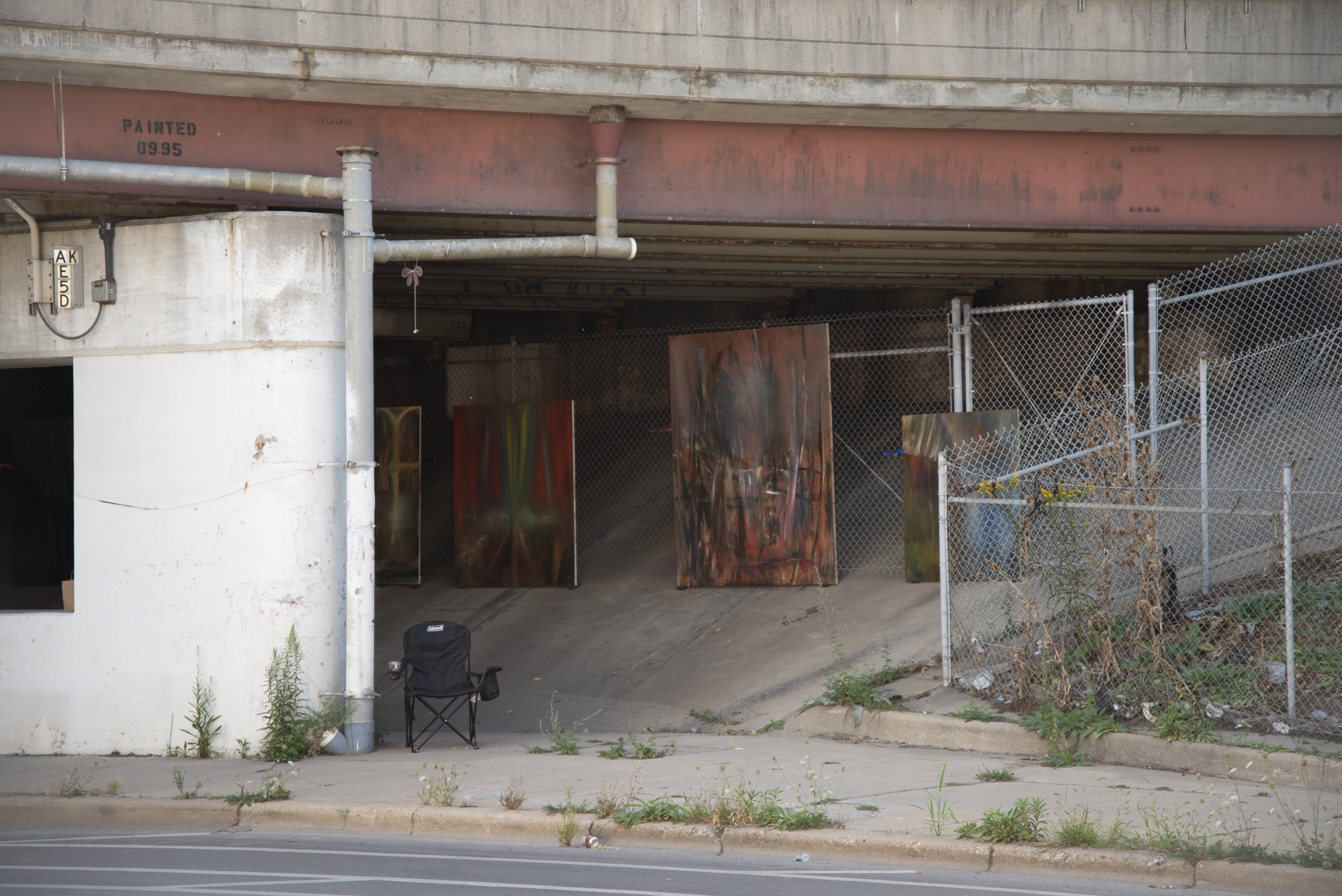Dave Lloyd
Fief pt. 2
May 24 - July 12
Fief pt. 2
May 24 - July 12

In the gallery are two projects that began in 2012 and ended in 2023:
Prior to exhibition, each painting and item was one personal tool among many others now hidden by necessity or not currently on display. These tools were used to build and maintain an art for its own sake within the confines of the individual life they pertain to.
During the exhibition, this dual format hopes to provide the audience with mental or emotional access to a significant human problem.
In addition, there is one railroad sculpture in three constituent parts made for this occasion.
This is the second of a two part exhibition; the paintings were first shown as individuals on September 21st, 2024 for 12 hours between 7am and 7pm, ratchet-strapped to a state fence in a highway underpass on Sacramento Avenue in Chicago, IL.
Dave Lloyd lives in Chicago, IL. This is his first gallery exhibition.